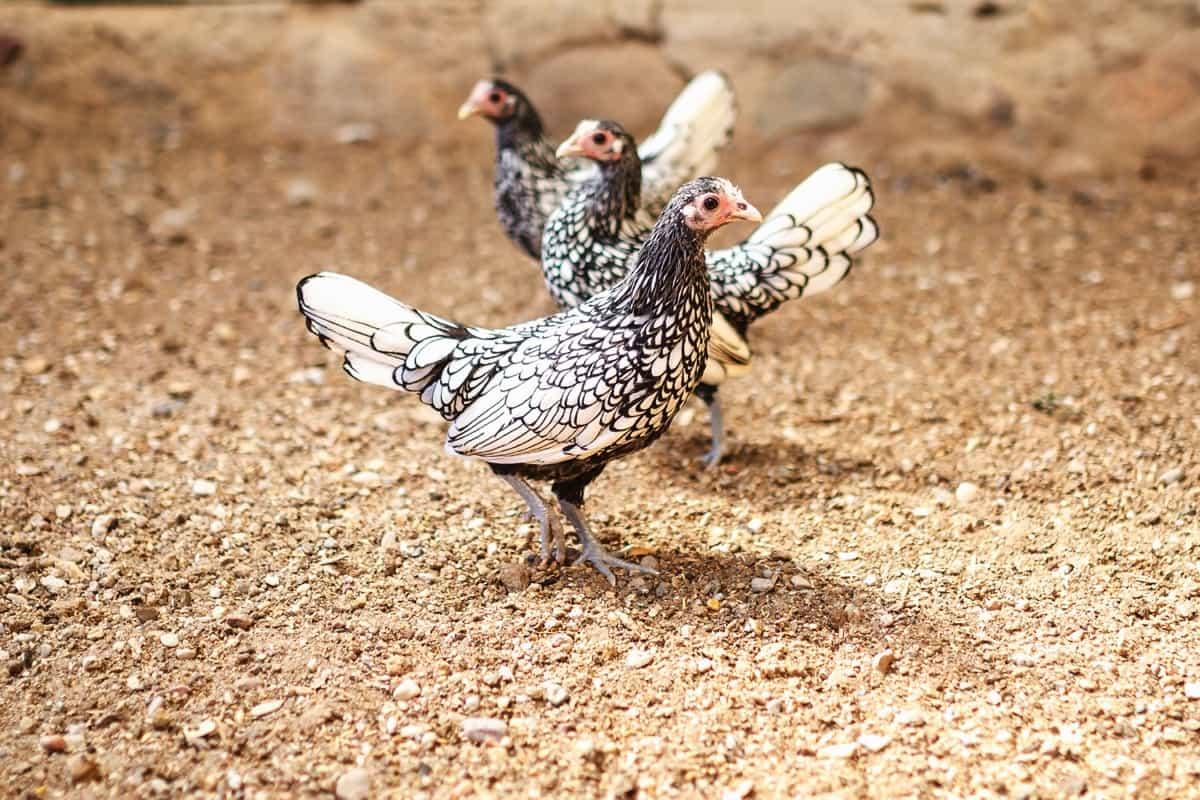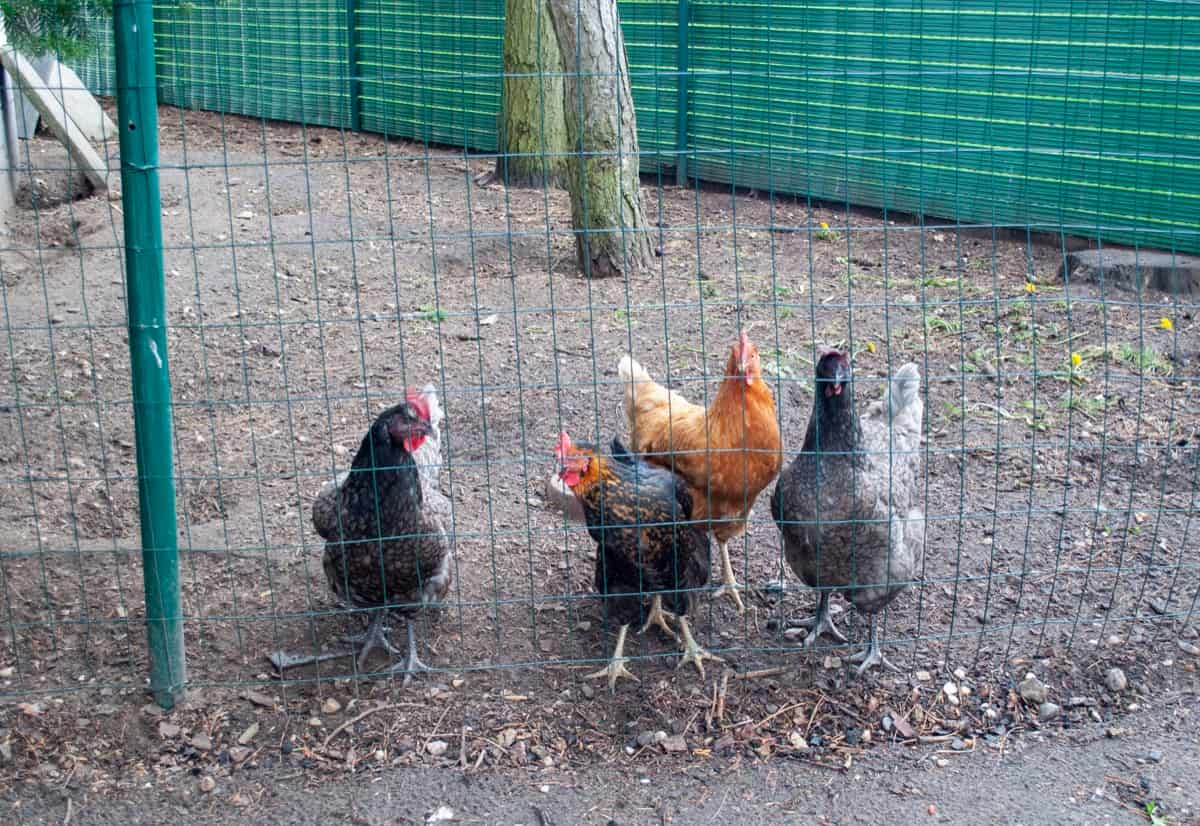Andalusian chickens are known for their unique blue plumage. Originally from Spain’s Andalusia region, the Andalusian chicken has a long and storied history. It is thought to be descended from ancient Mediterranean breeds brought to the Iberian Peninsula by the Romans. Over time, the breed developed its distinctive blue plumage, which makes it stand out from other chicken breeds. Due to its striking appearance and desirable characteristics, this breed has gained popularity. In this document, you will learn everything you need to know about this fascinating blue hen.

Guide to Andalusian Chicken
Origin of Andalusian Chickens
Blue Andalusians are named after a province in Spain where they once flourished. Spanish breeders developed the Blue Andalusian by crossing black chickens with white chickens of the same breed. Due to naturally occurring genetic mutations, these chickens were white. In 1846, blue Andalusian chickens were imported into England and became very popular. They were then imported into America in the 1850s. As the 20th century progressed, the birds’ popularity declined and became scarce. Recently, the Blue Andalusian has gained popularity as a show bird.
Andalusian Chicken Appearance
- There were some physical similarities between early Andalusian chickens and pure Minora chickens. It would be ideal if their color were slate blue and paler than it is now.
- A black lacing surrounds the edges of the original blue variant’s feathers, giving them a black appearance. Other color variants are black and white, but neither is recognized.
- Andalusian chickens have reddish-brown eyes, horny beaks slightly curved downward, white oval earlobes, and black or slate-blue featherless legs. The feet have four toes each.
- They have long, slender bodies and are not so robust. In general, the quality of their feather color and lacing is determined by the color of their parents.
Andalusian Chicken Egg Laying & Broodiness
- Andalusian chickens lay a lot of eggs. These birds lay about three eggs weekly, resulting in 150 and 165 eggs a year.
- Eggs are medium or large in size and white in color. All Andalusian birds produce eggs readily, but white hens tend to produce larger eggs than other hens of the breed.
- In addition to laying eggs all year round, these chickens are known to lay eggs during the winter.
- The Andalusian hen is not broody, which means it has little interest in sitting on a nest or incubating its eggs. Keepers who want to use eggs for food should take note of this trait since broody hens can sometimes become aggressive when disturbed.
- The eggs must, however, be placed under a broody hen of a different breed or in an incubator if Andalusian baby chickens are desired.
- Baby chickens of the Andalusian breed tend to mature much more quickly than those of other breeds if eggs are incubated and hatched.
Andalusian Chicken Behavior/Temperament
- Andalusian chickens are quieter and less flighty than most other Mediterranean poultry breeds.
- Their graceful, stately, and rugged nature make them excellent foragers. Although hens lay large eggs, they don’t go broody often, so they aren’t natural sitters.
- Approximately 5-6 months after birth, pullets begin laying. The Andalusian baby chickens mature earlier and is very hardy.
- The roosters usually don’t fight with each other, and they’re relatively calm birds.
- It is important to provide them with plenty of space to avoid future bullying problems. As a result of their dislike of overcrowding, they are excellent foragers and prefer to roam freely.
- The Andalusian chicken is a hardy bird that can survive in almost any climate. Their hardiness makes them suitable for cold climates. Frostbite can occur due to their fine textured and large combs.
- As well as performing well in hot climates, they are also heat tolerant in the South.
In case you missed it: The Black Star Chicken: Find Out What Makes it So Special

Andalusian Chicken Feeding
There are slight differences in the diet requirements depending on the size, age, and gender of your bird. Eggs with a thin or soft texture may indicate that Blue Andalusian hens are not getting enough calcium in their diet. You may need to give them a calcium supplement to ensure their nutritional needs are met. Your feathered friend will be healthy and happy if you feed them a well-balanced diet.
Fresh fruits and vegetables and commercial poultry feed should be fed to your Blue Andalusian chickens. Most fruits and vegetables are acceptable as long as they’re safe. This flock enjoys cooking scraps, including rice, pasta, bread, and other food scraps.
Andalusian Breeding And Color Chart
When you breed Andalusians, the following combinations are achievable:
- Blue X Blue = 50% Blue, 25% Black, 25% Splash
- Blue X Black = 50% Blue, 50% Black
- Blue X Splash = 50% Blue, 50% Splash
- Black X Black = 100% Black
- Splash X Splash = 100% Splash
- Splash X Black = 100% Blue
Common Health Issues in Andalusian Breed
In general, Andalusian chickens are not prone to more illnesses or diseases than other chickens due to their rugged nature. A clean and tidy environment for chickens can help prevent them from contracting avian flu, which can be deadly. Additionally, parasites, mites, and ticks can be reduced by doing this. Chickens, including Andalusians, are susceptible to bumblefoot. The development of a painful infection on the foot characterizes it. Bumblefoot occurs when bacteria enter a small cut or scratch on the foot, causing a hard, scab-like growth.
The affected chicken may become lame and uncomfortable as a result. An antibiotic bath, such as a Tricide Neo solution, can help ward off bumblefoot if a chicken is limping or showing signs of injury. During prolonged exposure to freezing temperatures, chicken’s extremities, such as their combs, wattles, and feet, can develop frostbite. As a result of the freezing temperatures, the tissues freeze, causing cell damage and potential tissue loss.
Are Blue Andalusian roosters aggressive to people?
There is a mixed bag of blue Andalusian roosters here as well. Some roosters are very flighty and sweet. Some roosters may be aggressive. Obviously, confinement will make this breed aggressive. Don’t forget that roosters typically become less aggressive as they age. However, if you cannot handle rooster aggression, you may not want to choose this breed.
In case you missed it: The Best Way to Keep Chickens Laying Eggs During the Winter

Conclusion
With its striking blue plumage, the Andalusian chicken is a captivating breed. In addition to being visually appealing, they are also excellent egg layers and have a friendly temperament. These blue hens will thrive in various environments if given the proper care and maintenance. The Andalusian chicken is a breed worth considering, whether you are a chicken enthusiast or appreciate its beauty.
Note: The images presented in this post are intended solely for representation purposes. The images are meant to serve as visual aids and should not be relied upon as accurate representations of their real-life counterparts.
- Feed Your Flock for Less: Top 10 Tips to Save on Chicken Feed
- Ultimate Guide to Ossabaw Island Hog: Breeding, Raising, Diet, and Care
- Hatching Answers: The Top 10 Reasons Your Chickens Aren’t Laying Eggs
- Eggs and Economics: Breaking Down the Cost of Raising Backyard Chickens
- Defend Your Greens: Proven Methods to Keep Iguanas Out of Your Garden
- Ultimate Guide to Cinnamon Queen Chicken: A Comprehensive Guide for Beginners
- Ultimate Guide to California Tan Chicken: Breeding, Raising, Diet, Egg-Production and Care
- Ultimate Guide to Marsh Daisy Chicken: Breeding, Raising, Diet, and Care
- 10 Types of Chicken Farming Businesses You Can Start for Profits